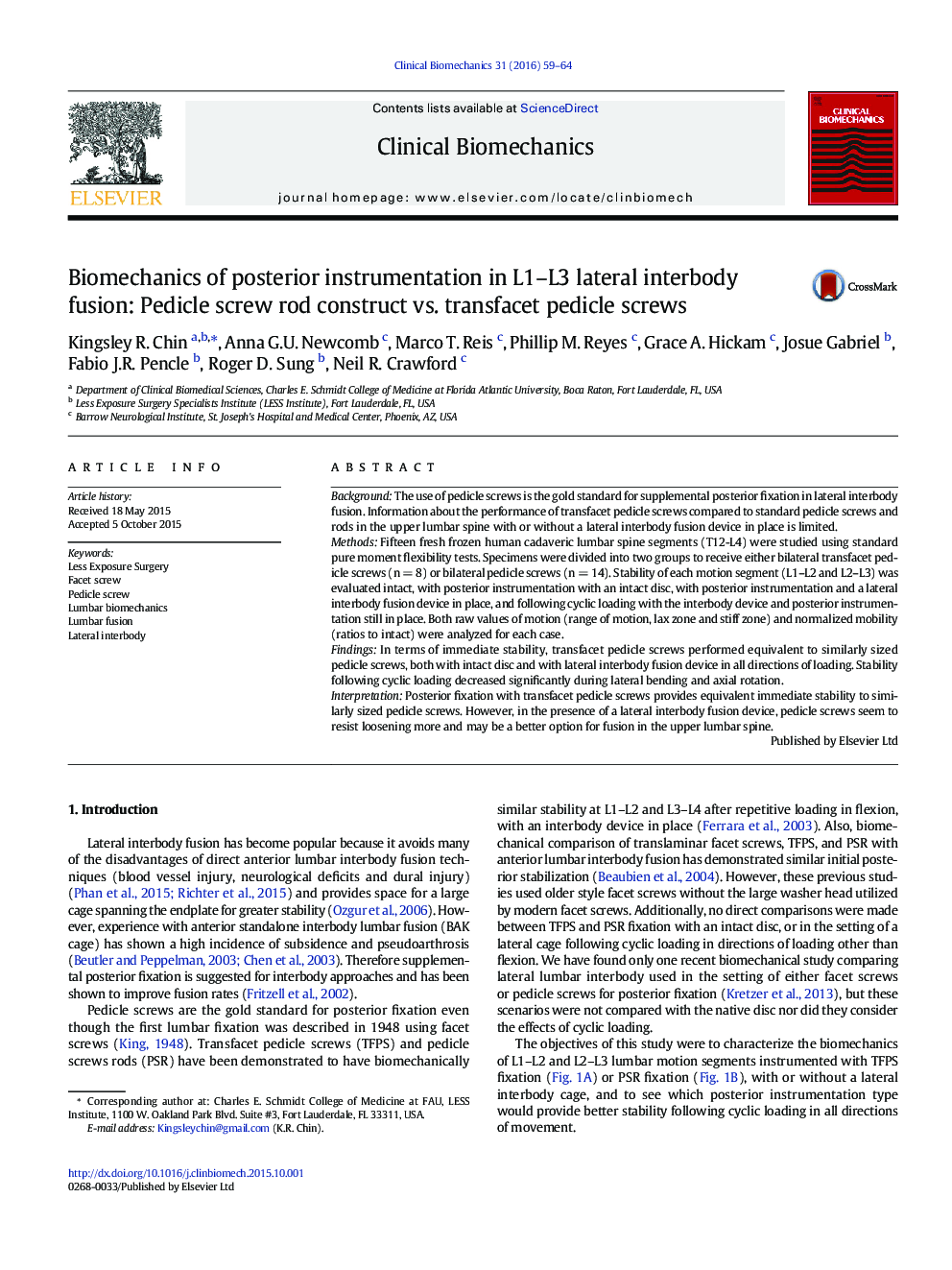| کد مقاله | کد نشریه | سال انتشار | مقاله انگلیسی | نسخه تمام متن |
|---|---|---|---|---|
| 4050169 | 1603747 | 2016 | 6 صفحه PDF | دانلود رایگان |

• Lateral interbody fusion and supplemental posterior fixation for interbody approaches has been shown to improve fusion rates.
• Characterize the biomechanics of L1-L2 and L2-L3 lumbar motion segments
• Cadaveric specimens were studied using standard pure moment flexibility tests
• Instrumentation with transfacet pedicle screws fixation versus pedicle screw rod construct
BackgroundThe use of pedicle screws is the gold standard for supplemental posterior fixation in lateral interbody fusion. Information about the performance of transfacet pedicle screws compared to standard pedicle screws and rods in the upper lumbar spine with or without a lateral interbody fusion device in place is limited.MethodsFifteen fresh frozen human cadaveric lumbar spine segments (T12-L4) were studied using standard pure moment flexibility tests. Specimens were divided into two groups to receive either bilateral transfacet pedicle screws (n = 8) or bilateral pedicle screws (n = 14). Stability of each motion segment (L1–L2 and L2–L3) was evaluated intact, with posterior instrumentation with an intact disc, with posterior instrumentation and a lateral interbody fusion device in place, and following cyclic loading with the interbody device and posterior instrumentation still in place. Both raw values of motion (range of motion, lax zone and stiff zone) and normalized mobility (ratios to intact) were analyzed for each case.FindingsIn terms of immediate stability, transfacet pedicle screws performed equivalent to similarly sized pedicle screws, both with intact disc and with lateral interbody fusion device in all directions of loading. Stability following cyclic loading decreased significantly during lateral bending and axial rotation.InterpretationPosterior fixation with transfacet pedicle screws provides equivalent immediate stability to similarly sized pedicle screws. However, in the presence of a lateral interbody fusion device, pedicle screws seem to resist loosening more and may be a better option for fusion in the upper lumbar spine.
Journal: Clinical Biomechanics - Volume 31, January 2016, Pages 59–64